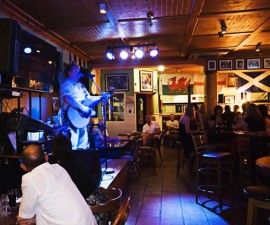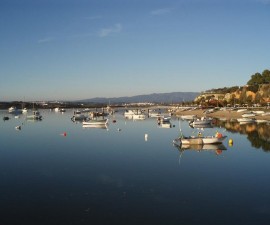There has been a town at Alvor, Portugal, since before the eleventh century, ensuring that the town has a rich culture and long history. Alvor and the surrounding area offer a number of interesting museums and galleries in which to learn about and admire the local way of life, artistic traditions and modern cultural movements.
Start your cultural tour of Alvor and the surrounding area at the Núcleo Etnográfico, near the old railway station in Mexilhoeira Grande. Here you can see a number of objects related to fishing and life in the estuary. The Núcleo Etnográfico is divided into various sections, including sea life, agriculture and other daily activities such as the life of a barber or shoemaker, and sport and education.
There are several churches in Alvor worthy of a visit to admire their fine Manueline facades, intricate gilding and historical significance, including the Igreja Matriz Divini Salvador that presides over the town.
The Igreja Matriz Divini Salvador is a fine example of Manueline architecture, so named after the aesthetic tastes of King Manuel of Portugal, who reigned during the early 16th century. Take time to admire the interior architecture, altar and 18th century chancel that was added after the devastating earthquake of 1755 destroyed much of the architecture along the length of the Algarve.
For art and handcrafted jewellery and a chance to see the artists in action, visit the Kraftwork craft studio in the town centre where you can watch modern accessories being made with traditional methods. The Kraftwork craft studio is a great spot for buying some bargain pieces to support local artists and remind you of your time in Alvor.
Neighbouring Portimão houses one of the most important museums in the region. The Museum of Portimão is located in a former fish-canning factory on the banks of the Arade river. This is a huge cultural centre that embraces its geographic location and the history and culture of Portimão, Alvor and the surrounding region, providing a window into the history, struggles and lives of the local people.
The Museum of Portimão houses a long-term exhibition called “Portimão – Territory and Identity” which takes us on a fascinating journey through time, from pre-history, through Roman and Islamic occupation, past the Reconquest and leading us through the past few centuries to the present day. It also provides an interesting window into various aspects of modern day life in Portimão and its environs as it transforms itself from a rural to an industrial then a touristic region.
A further section documents the life and challenges of the Ocean, covering the fishing trade and former fish-canning industry and a third area focuses on the flora, fauna and natural wildlife of the coast and riverbed. The museum also hosts a number of temporary exhibitions and cultural events throughout the year.
The Casa-Museu Manuel Teixeira Gomes on Rua Júdice Biker in Portimão is located in the former house of its namesake, Portimão’s most famous former resident who was president of Portugal in 1923. Casa-Museu Manuel Teixeira Gomes provides an interesting insight into the former president’s formative years as well as his life at the helm of the country.
Galleries in Portimão include the EMARP Gallery on Rua José António Marques and the Museu Digo Gonçalves on the Avenida São João de Deus. The EMARP Gallery is a lovely spot, displaying a range of art works and the larger Museu Digo Gonçalves houses various exhibitions of paintings and sculptures. Both are open Monday to Friday only and closed at weekends.
Take the time to visit the Information Centre at Alcalar as your tour the cultural sites of the area. Alcalar is a Neolithic burial place dating back to pre-history and has some interesting exhibitions and information about the site and the ancient people bured there.
Finish your tour at the Museu Municipal de Lagos and the Museu Municipal Dr. José Formosinho, both situated on R. Gen. Alberto da Silveira in the town centre. The Museu Municipal de Lagos is home to a collection of ecclesiastical art, everyday items and some lovely 17th- and 18th-century paintings, while the Museu Municipal Dr. José Formosinho showcases a number of excavated archeological findings from Roman times including columns, statues and mosaics.

